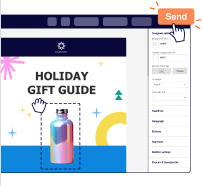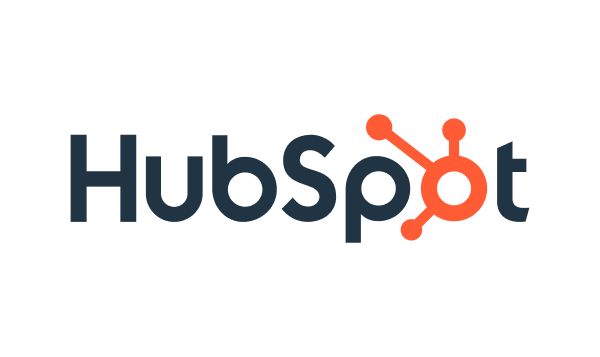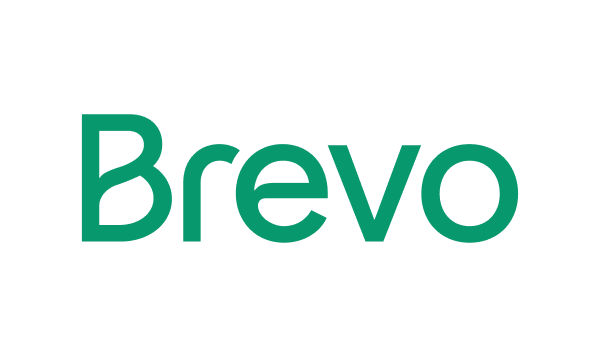Keap started out with a solid vision. It promised to bring CRM, email marketing, and sales pipeline management together in one neat package, which sounds appealing if you’re a small business owner juggling a dozen different tools. And for a while, it worked well enough for consultants, service providers, and growing businesses who just wanted everything in one place.
But here’s the thing: what looked good on paper doesn’t always work out in real life. Those same businesses that were initially drawn to Keap’s “all-in-one” promise are now dealing with some frustrating realities.
Let’s take a closer look.
Disclaimer: This article evaluates Keap alternatives, including Sender, which our company owns. Email marketing comparisons and assessments are based on research, industry standards, and user feedback. No commissions are earned from links in this article.
Why Consider Keap Alternatives?
If you’ve been using Keap, you’ve probably run into at least one of these issues. And if you’re just researching it now, you’ll want to know what current users are actually experiencing beyond the marketing materials.
Weak Integrations
This one’s particularly frustrating because integrations are supposed to make your life easier, not harder. Keap users consistently report that connecting their essential business tools feels like solving a puzzle with missing pieces. Instead of native integrations that just work, you’ll find yourself relying on Zapier for basic connections that other CRMs handle out of the box.
High Costs
Here’s where things get painful. Keap’s pricing structure can feel like a bait-and-switch – what starts as a reasonable monthly fee quickly becomes expensive once you factor in all the extras. And we’re not talking about fancy add-ons; we’re talking about basic functionality.
Capterra analyzed over 1,200 user reviews and found something telling: “56% of the user reviews we analyzed agreed that the software is too expensive.” That’s not just a few disgruntled customers – that’s more than half of users saying the price doesn’t match the value. Throw in that mandatory $499 expert coaching fee and additional charges for extra users, and you’re looking at costs that can easily double what you initially budgeted.
Deliverability Issues
This one’s a deal-breaker for many businesses, and it should be. What’s the point of having great email automation if your emails don’t reach people? Keap has ongoing issues with email deliverability, especially to Microsoft-hosted domains like Outlook and Hotmail.
Their own Known Issues page acknowledges “delivery challenges affecting emails sent to Microsoft-hosted domains (including @hotmail.com, @outlook.com, @live.com)”. Some IP addresses have been permanently blocked due to poor sending practices by users on the platform. When your email marketing platform can’t reliably deliver emails, that’s a pretty fundamental problem.
Poor Customer Support
Customer support can make or break your experience with any software, and unfortunately, this is where Keap really struggles. Users report long wait times, unhelpful responses, and support reps who seem to lack the knowledge to actually solve problems.
A frustrated Trustpilot reviewer shared their experience: “Really unhappy with using Keap. I’ve been on support 5 times to fix a couple issues with contacts getting sent the same email multiple times. I’ve spent 2 hours on support, and no one can fix the issue”. When you’re dealing with issues that directly affect your customers (like duplicate emails), you need support that can actually help.
Limited Features
For a platform that positions itself as comprehensive, Keap has some surprising gaps. Users on TrustRadius have pointed out limitations and noted that “Some reports lack the ability to combine with custom fields/other search parameters which requires some work arounds”.
It’s that classic jack-of-all-trades problem — when you try to do everything, you sometimes don’t do anything particularly well. Users end up with a platform that covers the basics but lacks the depth they need as their business grows.
Keap Competitors Comparison Table
Before we jump into details, here’s a handy table for you to pick a potential Keap replacement:
| Alternative | Best For | Top Feature | Starting Price (USD/mo) |
| Sender | SMBs, ecommerce businesses | Easy automation + generous free plan | Free, Paid from $7 |
| HubSpot CRM | Growing teams, B2B companies | Powerful free CRM with advanced add-ons | Free, Paid from $20 |
| ActiveCampaign | Service-based businesses, SaaS | Deep segmentation + automation | From $15 |
| Pipedrive | Sales-focused teams, Google Workspace users | Sales pipeline visualizations | From $15 |
| GoHighLevel | Agencies, consultants | All-in-one sales & marketing automation | Custom pricing |
| Salesforce Marketing Cloud | Large enterprises, global brands | Enterprise-grade personalization | From $25 |
| Zoho CRM | Startups, SMBs | Affordable CRM with AI-powered insights | Free, Paid from $14 |
| Freshsales | Support-heavy teams, SaaS | Built-in telephony + email sync | From $9 |
| Brevo | SMBs, marketers seeking multi-channel | Email, SMS, and WhatsApp under one roof | Free, Paid from $8 |
| Encharge | SaaS businesses, product-led growth teams | Powerful behavior-based automation | From $99 |
10 Best Keap Alternatives Compared
And now the moment has come — the best Keap alternatives our team swears by:
Sender — Best Alternative to Keap
Something refreshing: a platform that gives you serious value without making you jump through hoops. Sender offers 15,000 monthly emails to 2,500 subscribers completely free — that’s not a trial, that’s just their free plan.
Sender pricing: Starts at $7/month for up to 1,000 subscribers | Forever free plan available.
What makes Sender particularly appealing is how they’ve thought through the automation piece. You get nine pre-built workflows that cover the scenarios most businesses need – abandoned cart recovery, webinar follow-ups, customer win-back campaigns and more. This helps businesses automate marketing processes efficiently.
The contact management and task management piece is straightforward too. You’ve got over 60 professional templates to choose from, and the drag-and-drop editor works the way you’d expect it to. But what’s smart – they’ve built automated email and SMS marketing into one unified system. So instead of paying extra for SMS capabilities (you would with Keap), you can create personalized marketing campaigns right out of the gate.
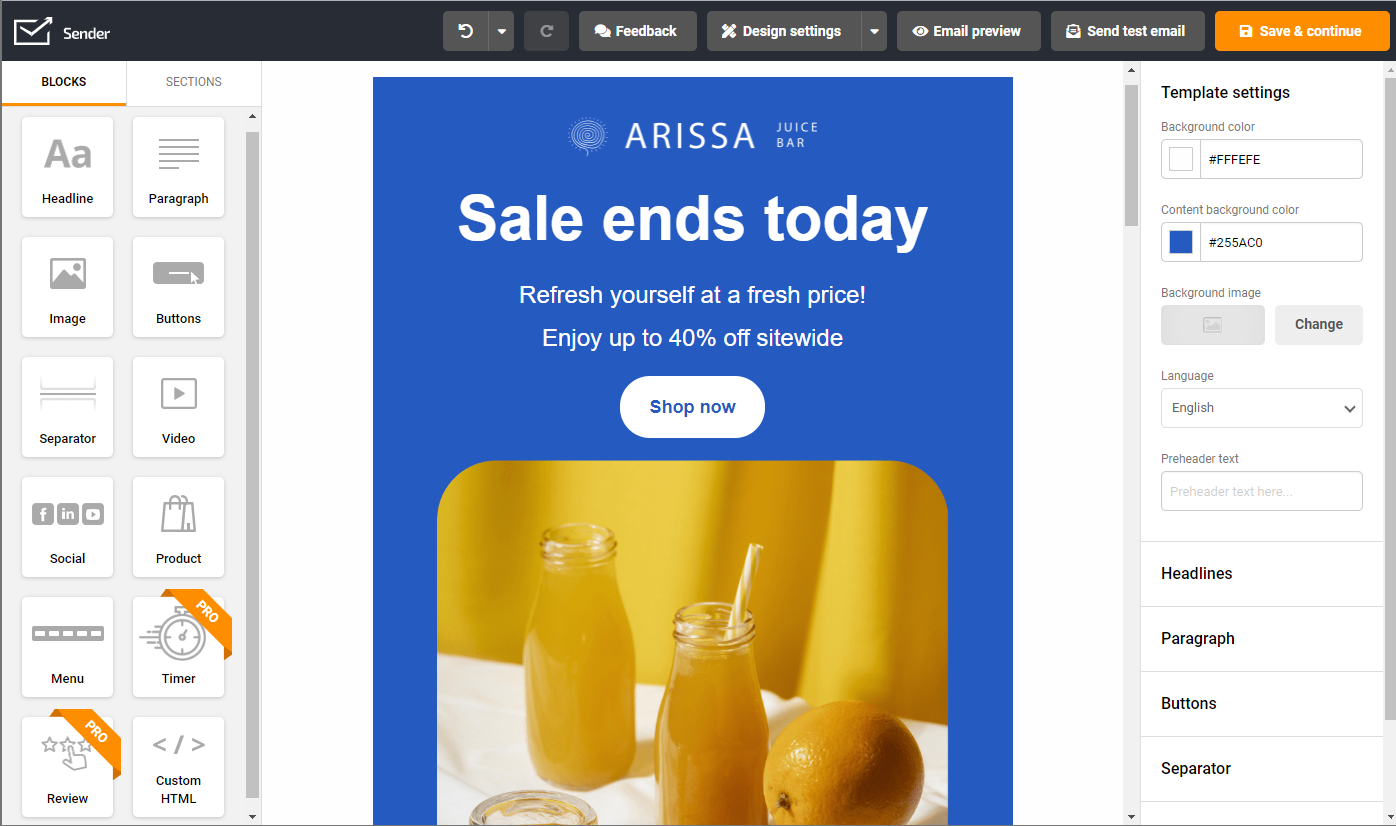
Key features
- Generous free tier. 15,000 monthly emails to 2,500 subscribers with full automation, segmentation, and template access included;
- Pre-built automation workflows. Nine ready-to-use automation recipes covering abandoned cart recovery, webinars, and customer win-back campaigns;
- Cross-channel marketing. Unified email and SMS campaigns with advanced segmentation based on ecommerce-specific criteria and behaviors;
- Affordable scaling. Premium plans start at $47.50/month for 10,000 subscribers with 24/7 support and seamless integrations.
Pros & Cons
- ✅ Generous free plan
- ✅ Simple automation builder
- ✅ High email deliverability
- ❌ Sender branding in free plan
- ❌ No landing page builder (yet)
- ❌ Fewer native integrations
Sender vs Keap Pricing
The pricing difference here is pretty dramatic. Sender’s free plan includes 15,000 monthly emails to 2,500 subscribers with full automation features – that’s more than many businesses need when they’re starting out. Their paid plans begin at $40/month for 10,000 subscribers and 120,000 emails.
Meanwhile, Keap’s comparable offering starts at $199/month for just 1,500 contacts and only includes 2 users. Plus, you’ll need to factor in that mandatory $499 onboarding fee. When you do the math, Sender can be up to 75% more cost-effective, especially for growing email lists. And there are no surprise user fees or contact restrictions that suddenly bump up your costs.
Reasons to Choose Sender Over Keap
- Exceptional free tier value. Get 15,000 monthly emails to 2,500 subscribers with full automation features at no cost, compared to Keap’s $199/month minimum;
- No mandatory onboarding fees. Start immediately without Keap’s required $499 expert coaching fee that inflates initial costs;
- Transparent pricing structure. Enjoy straightforward pricing without hidden user charges or restrictive contact limitations that plague Keap’s model;
- Cross-channel marketing integration. Access unified email and SMS campaigns from day one, while Keap charges extra for SMS functionality;
- Faster implementation. Launch campaigns within hours instead of Keap’s complex setup process that requires extensive onboarding support.
HubSpot CRM — Advanced CRM Features Platform
HubSpot is one of those platforms that’s managed to earn its reputation – by delivering on what it promises. While other CRMs talk about being user-friendly, HubSpot is. The platform serves as a comprehensive customer relationship management (CRM) solution.
HubSpot pricing: Starts at $15/month for up to 1,000 contacts | Free plan available.
What sets HubSpot apart is their AI integration through what they call Breeze agents. These aren’t just marketing gimmicks – they automate content creation, help with lead scoring, and handle routine customer support tasks. Plus, with over 1,800 marketplace integrations, you can connect most tools you’re using without the headaches you’d face with Keap. This creates extensive integration capabilities for businesses.
The CRM features side is where HubSpot shines. You get visual dashboards that make sense, automated task assignment that works reliably, and real-time deal tracking that gives you genuine insights into your sales performance.
The reporting goes deep too – you can track marketing attribution, map customer journey paths, and get detailed analytics on sales performance. It’s the kind of data that helps you make better decisions, not just prettier charts.
And unlike Keap, you won’t hit arbitrary limits that force expensive upgrades. The platform provides advanced marketing tools for comprehensive business management.
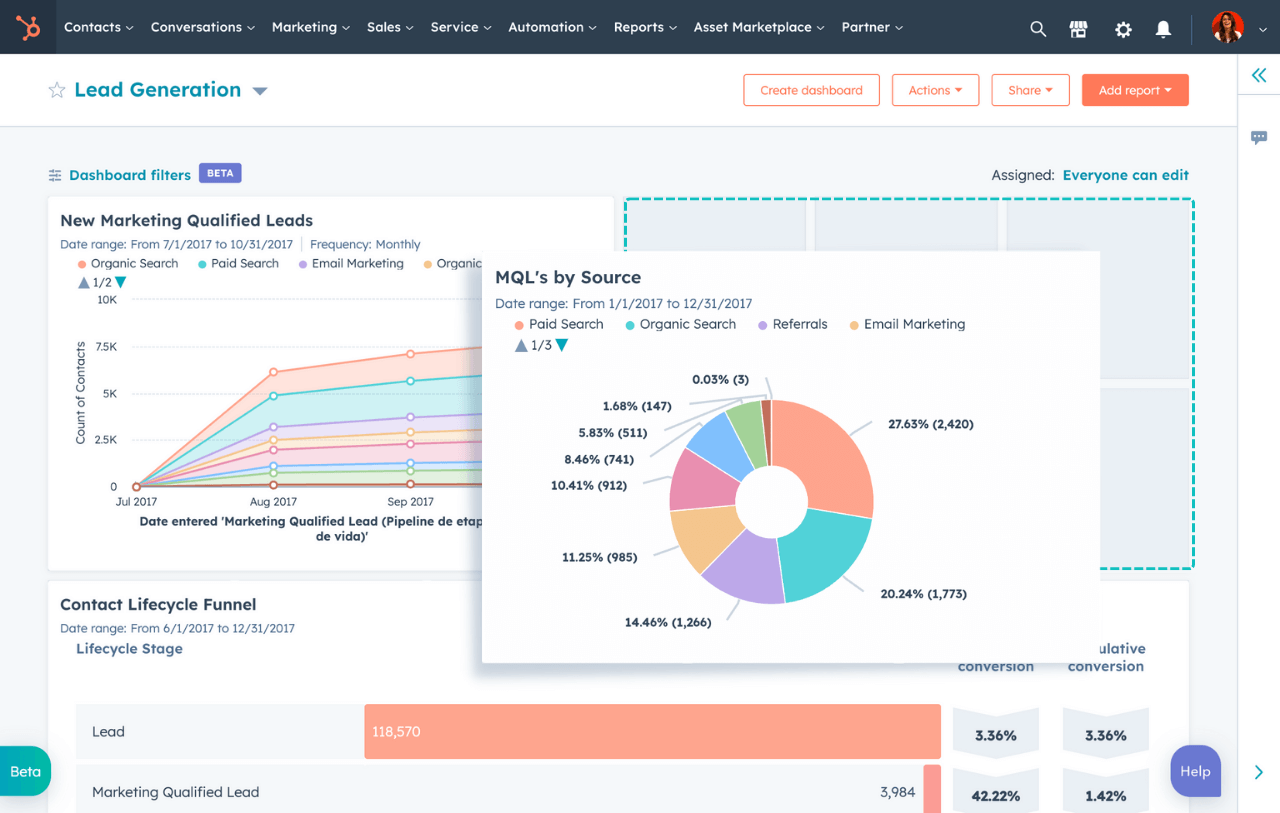
Key features
- AI-powered breeze agents. Automated content creation, lead qualification, and customer support with intelligent workflow adaptation capabilities;
- Smart CRM integration. Unified marketing, sales, and service data with 360-degree customer insights and predictive analytics;
- Extensive app marketplace. Over 1,800 integrations with native connections to major business tools and platforms;
- Free tier excellence. Robust free plan with advanced features typically found only in premium CRM solutions.
Pros & Cons
- ✅ Powerful free CRM
- ✅ Rich integration ecosystem
- ✅ Scalable for growing businesses
- ❌ Can get expensive with add-ons
- ❌ Steeper learning curve
- ❌ Email marketing limited on free plan
HubSpot CRM vs Keap Pricing
Here’s where HubSpot really outshines Keap. Their free tier includes CRM functionality, email marketing, forms, and basic automation – features that cost $199/month in Keap’s entry-level plan. When you’re ready for more advanced features, HubSpot’s paid Marketing Hub starts at $45/month for 1,000 contacts, which is still significantly less than Keap’s $199/month for 1,500 contacts.
The real value becomes apparent when you compare what you get at each level. HubSpot gives you substantially more functionality at every tier, without the mandatory $499 expert coaching fee or the restrictive user limits that make Keap increasingly expensive as your team grows.
Reasons to Choose HubSpot CRM Over Keap
- Superior free plan. Access comprehensive CRM, email marketing, and automation tools at no cost versus Keap’s expensive entry requirements;
- AI-powered innovation. Leverage advanced Breeze agents and machine learning capabilities that surpass Keap’s basic automation features;
- Extensive integration ecosystem. Connect with 1,800+ apps seamlessly, compared to Keap’s limited integration options requiring third-party solutions;
- No artificial user restrictions. Scale your team without per-user penalties that make Keap increasingly expensive as you grow;
- Enterprise-grade features. Access advanced reporting, custom dashboards, and sophisticated workflows typically reserved for premium platforms;
- Proven scalability. Grow from startup to enterprise on one platform instead of outgrowing Keap’s limited capabilities.
“Everything I need is in one place, and I’m able to launch campaigns quickly and as often as I’d like The HubSpot Customer Support team is available if any questions arise. The platform is pretty user friendly, so implementation is a breeze!”
ActiveCampaign — Customer Engagement Automation
ActiveCampaign has quietly built one of the most sophisticated automation platforms out there, and they’ve done it while keeping things surprisingly user-friendly. With over 180,000 customers worldwide, they’ve figured something out that many of their competitors haven’t. This marketing automation platform designed for growing businesses focuses on sales and marketing automation.
User Experience Ratings:
- Capterra: 4.6 /5.0
- Trustpilot: 3.1 /5.0
- Shopify: 4.3 /5.0
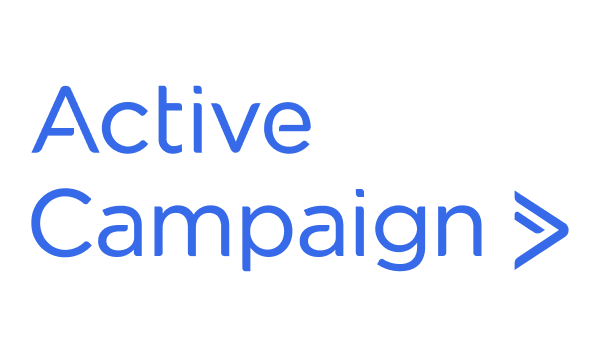
ActiveCampaign pricing: Starts at $15/month for up to 1,000 contacts and up to 10,000 emails/month | 14-day free plan available.
The automation builder is genuinely impressive – they describe it as working similar to building blocks, and that’s a good description. You can start with one of hundreds of pre-built templates organized by industry, or build something completely custom using their workflow elements.
The triggers are comprehensive too: email engagement, website behavior, purchase history, custom events – most customer actions you can think of. What’s clever is how they use machine learning to optimize send times and content for each individual contact.
The segmentation capabilities are where ActiveCampaign pulls ahead of the pack. You can segment based on behavioral data, engagement patterns, and custom field combinations in ways that feel surgical in their precision. Their site tracking lets you create campaigns based on specific page visits and interactions, so you can send relevant messages based on what people are interested in. This helps create detailed customer profiles for better targeting.
But what might surprise you – beyond the email marketing services, ActiveCampaign offers solid CRM and marketing automation functionality. Lead management, lead scoring, sales pipeline automation – it’s all there and it integrates seamlessly with your marketing campaigns.
They’ve also got native SMS marketing and form building tools. And with a 91% average email deliverability rate, you can trust that your carefully crafted campaigns will reach their intended audience.
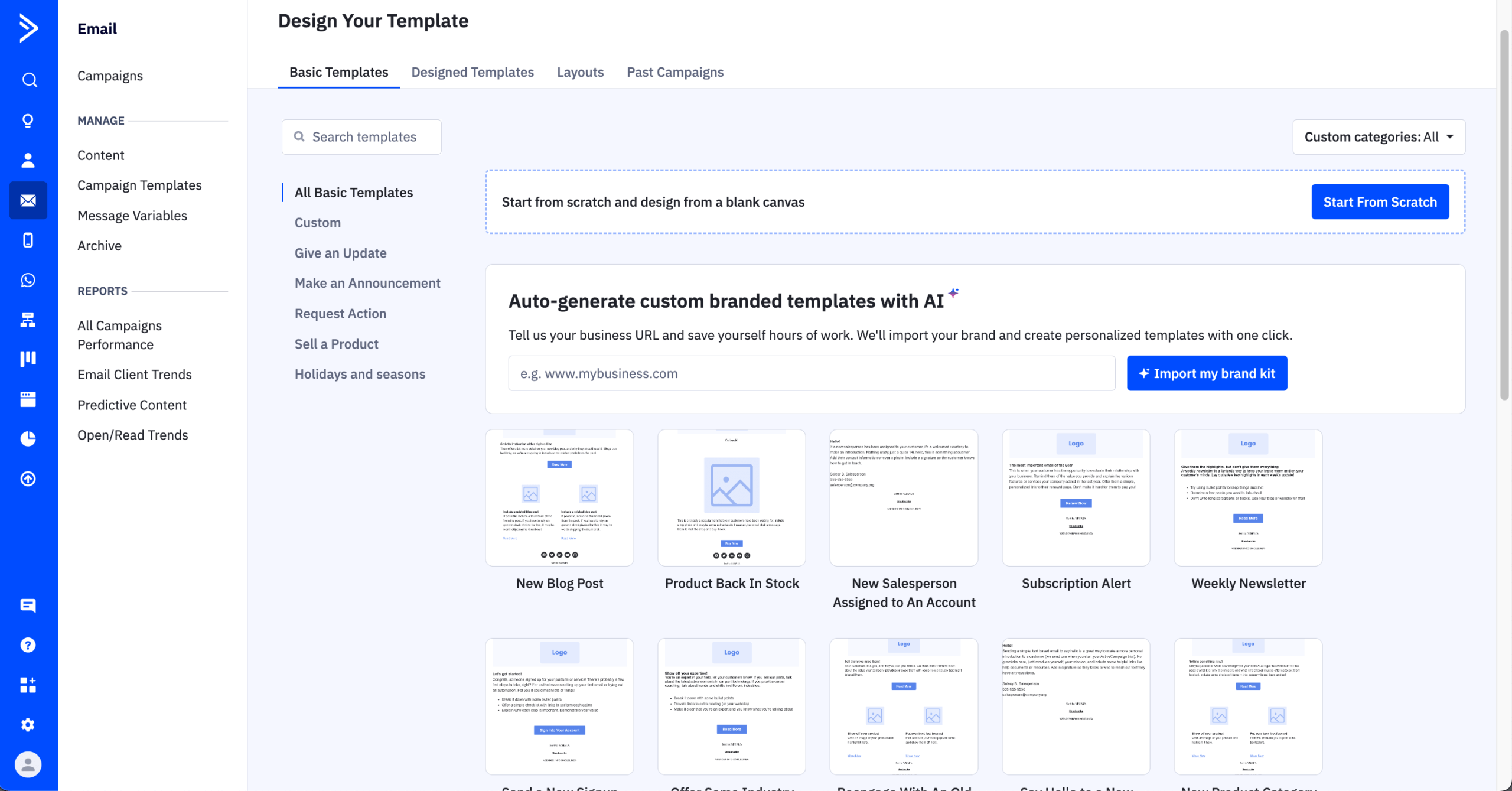
Key features
- Advanced automation builder. Effortless workflow creation with 900+ pre-built templates and machine learning optimization capabilities;
- Behavioral tracking. Site and event tracking with personalized campaigns based on specific page visits and interactions;
- Superior email deliverability. 91% average delivery rate with predictive sending and dynamic content personalization features;
- Integrated CRM functionality. Deal management, lead scoring, and sales pipeline automation with native SMS marketing capabilities.
Pros & Cons
- ✅ Advanced automation
- ✅ Excellent contact segmentation
- ✅ Great customer support
- ❌ No free plan
- ❌ Can be overwhelming for new users
- ❌ Expensive for large contact lists
ActiveCampaign vs Keap Pricing
ActiveCampaign’s pricing is refreshingly straightforward compared to Keap’s complicated structure. Plans start at $19/month for 1,000 contacts, while Keap jumps straight to $199/month for 1,500 contacts. ActiveCampaign includes advanced automation, CRM features, and unlimited email sends at all pricing tiers – features that Keap restricts to higher-priced plans.
You also won’t get hit with that mandatory $499 expert coaching fee, and ActiveCampaign is more generous with user allowances. When you factor everything in, you’re typically looking at 60-70% cost savings compared to Keap while getting access to more sophisticated features.
Reasons to Choose ActiveCampaign Over Keap
- Advanced automation capabilities. Create sophisticated multi-branch workflows with machine learning optimization that exceeds Keap’s basic automation features;
- Superior email deliverability. Achieve 91% delivery rates with advanced reputation management versus Keap’s ongoing deliverability challenges;
- Behavioral tracking excellence. Track detailed customer interactions and website behavior for precise personalization beyond Keap’s capabilities;
- Cost-effective scaling. Save 60-70% on costs while accessing more advanced features and better user allowances than Keap;
- Industry-leading segmentation. Use advanced targeting criteria and dynamic content that surpasses Keap’s basic segmentation tools;
- Integrated CRM functionality. Manage sales pipelines and customer relationships without additional fees or complex integrations required by Keap.
“We moved to ActiveCampaign from two separate systems — one a CRM and one an email marketing provider. Having the capabilities for both of these in one solution has been amazing. I love how easy it is to use ActiveCampaign for creating and sending our marketing emails.”
Pipedrive — Sales CRM with Google Workspace
If your team lives in Google Workspace – and many of us do – Pipedrive might just be the perfect fit. This platform was designed with Google integration in mind, not as an afterthought, and it shows in how seamlessly everything works together.
User Experience Rating:
- Capterra: 4.6 /5.0
- Trustpilot: 4.5 /5.0
- Shopify: NA
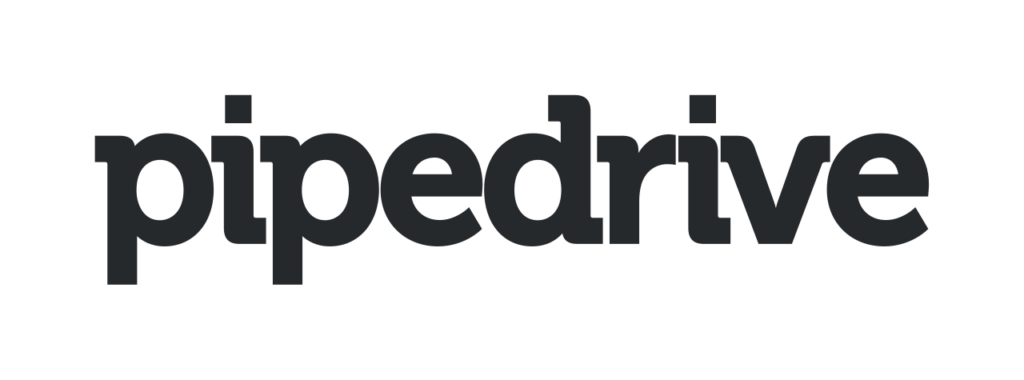
Pipedrive pricing: Starts at $15/month for Lead, calendar and pipeline management | 14-day free trial available.
The Google Workspace integration is genuinely native, which means your Gmail, Calendar, Contacts, and Drive all sync bidirectionally without any hiccups.
When you’re managing deals in Pipedrive, you can schedule meetings that automatically show up in Google Calendar, attach Google Drive documents directly to deals and contacts, and log emails automatically without thinking about it. It’s the kind of integration that works, unlike the workarounds you’d need with Keap.
Pipedrive’s visual approach to pipeline management is intuitive in a way that makes sense immediately. The kanban-style interface lets you see exactly where each deal stands, and you can customize the stages to match your specific sales process.
The automation features handle the tedious work – triggered follow-ups, automatic deal updates, activity scheduling – so your team can focus on selling. This approach covers the entire sales pipeline and improves sales productivity.
What’s particularly nice is how well this works on mobile. The Android and iOS apps are full-featured, with offline capabilities that sync when you’re back online. For sales teams that are often on the road, this kind of mobile access isn’t just convenient – it’s essential.
Plus, with over 500 marketplace integrations and solid API connectivity, you can adapt Pipedrive to work with whatever marketing tools you’re using. The platform helps manage customer relationships throughout the entire sales cycle.
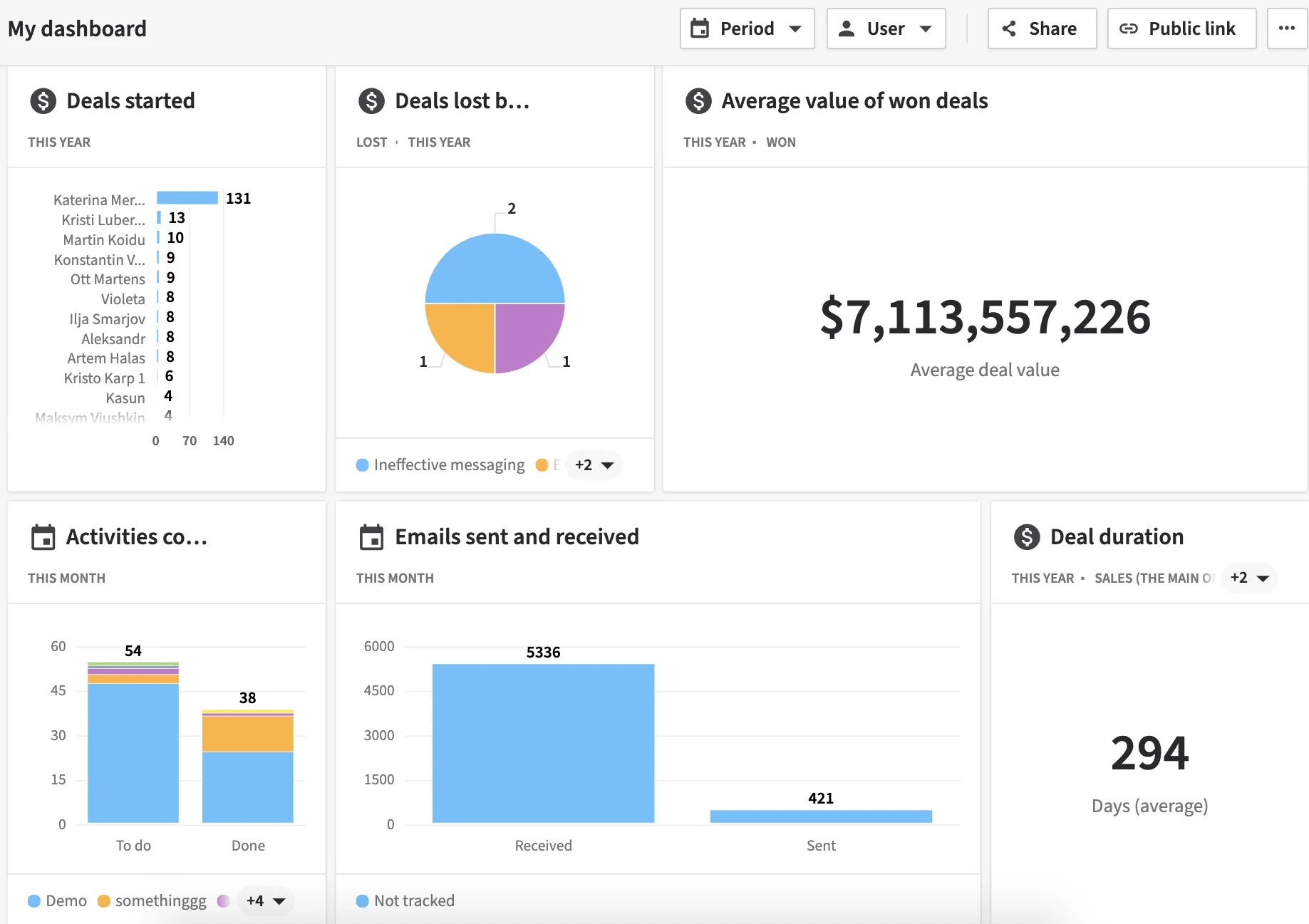
Key features
- Native Google integration.Seamless bidirectional sync with Gmail, Calendar, Contacts, and Drive for unified workspace experience;
- Visual pipeline management. Deal tracking with customizable stages and automated progression through sales processes;
- Mobile sales access. Full-featured Android and iOS apps with offline capabilities and real-time data synchronization;
- Extensive marketplace. 500+ integrations with robust API connectivity and specialized sales tools for forecasting.
Pros & Cons
- ✅ Easy-to-use interface
- ✅ Strong Google Workspace integration
- ✅ Customizable sales pipelines
- ❌ Lacks full marketing automation
- ❌ Limited email marketing tools
- ❌ Basic reporting on lower plans
Pipedrive vs Keap Pricing
Pipedrive uses a per-user pricing model starting at $14/month per user, which might seem different from Keap’s structure at first glance. But here’s the thing – even with a team of 3-5 users, you’ll still pay significantly less than Keap’s $199/month base price that only includes 2 users.
Pipedrive also eliminates that mandatory $499 onboarding fee and doesn’t restrict contact limits as aggressively as Keap does. For sales teams that prioritize pipeline management over comprehensive marketing automation, it’s particularly cost-effective.
Reasons to Choose Pipedrive Over Keap
- Native Google Workspace integration. Seamlessly sync with Gmail, Calendar, and Drive without the complex third-party integrations Keap requires;
- Sales-focused design. Access specialized sales tools and pipeline management features that outperform Keap’s generic CRM functionality;
- Transparent per-user pricing. Pay only for active users instead of Keap’s restrictive contact-based pricing with hidden user fees;
- Mobile-first architecture. Manage sales activities effectively on mobile devices with superior apps compared to Keap’s limited mobile experience;
- Visual pipeline management. Track deals intuitively with kanban-style workflows that surpass Keap’s outdated interface design.
“Pipedrive is very competitive to other more popular CRM tools, the price is also better. I almost have all the needed features in a CRM along with the process automation.“
GoHighLevel — All-in-One Business Needs Solution
GoHighLevel is interesting because it’s built specifically for agencies and service-based businesses – and it shows. While other platforms try to be everything to everyone, GoHighLevel focuses on what agencies need: comprehensive tools, white-label capabilities, and the ability to manage multiple clients efficiently to meet diverse business needs. The platform serves mid-sized businesses particularly well.
User Experience Rating:
- Capterra: 4.1 /5.0
- Trustpilot: 4.9 /5.0
- Shopify: NA

GoHighLevel pricing: Starts at $15/month for Lead, calendar and pipeline management | 14-day free trial available.
The platform includes everything you’d expect – funnel building, email automation, SMS campaigns, landing page creation, membership sites – but it also includes some things you might not expect, such as built-in call tracking, reputation management, and social media scheduling. It’s genuinely comprehensive in a way that eliminates the need for multiple tools.
You can manage entire marketing operations from one dashboard while maintaining brand consistency across all client touchpoints. This helps automate repetitive tasks across sales and marketing efforts.
The client relationship management tools are particularly well-thought-out. You get customizable pipelines, automated follow-up sequences, and detailed prospect tracking.
But GoHighLevel goes further with proposal generation, contract management, and invoicing capabilities that handle the entire sales process from initial contact to payment collection. The reporting gives you insights into campaign performance, client engagement, and revenue attribution across multiple business units.
But where GoHighLevel differentiates itself: the white-label features. You can rebrand the entire platform and resell services to clients under your own brand. That includes client onboarding automation, sub-account management, and custom domain capabilities. For agencies looking to scale their service offerings, this is a significant advantage.
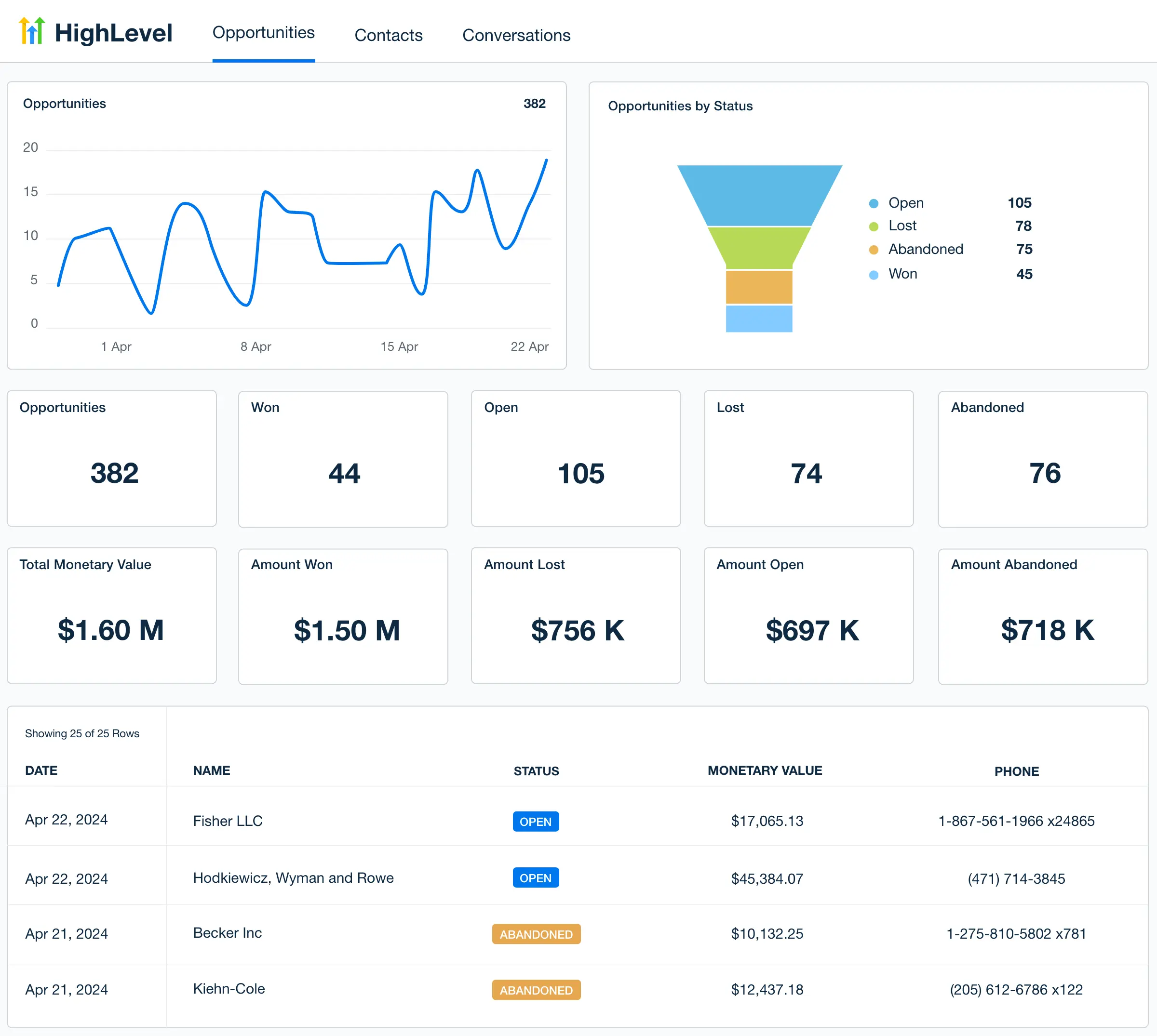
Key features
- Complete marketing suite. Funnel building, email automation, SMS campaigns, landing pages, and membership site creation tools;
- White-label capabilities. Full platform rebranding with sub-account management and custom domain options for agencies;
- Integrated business tools. Built-in call tracking, reputation management, proposal generation, and invoicing system functionality;
- Unlimited client accounts. Higher-tier plans support unlimited contacts with comprehensive reporting across multiple business units.
Pros & Cons
- ✅ All-in-one platform
- ✅ Built for agencies
- ✅ White-label options available
- ❌ High starting cost
- ❌ Overwhelming UI
- ❌ Requires onboarding time
GoHighLevel vs Keap Pricing
GoHighLevel’s pricing structure is refreshingly simple: $97/month for unlimited contacts and users. Compare that to Keap’s $199/month that restricts both contacts and users significantly, and the value proposition becomes clear pretty quickly.
The agency plan at $297/month includes white-label capabilities and unlimited sub-accounts – features that would cost thousands monthly through Keap’s enterprise offerings, if they were available at all. With no additional user fees, mandatory coaching charges, or contact-based pricing restrictions, GoHighLevel delivers substantially more value for agencies and service-based businesses.
Reasons to Choose GoHighLevel Over Keap
- White-label opportunities. Rebrand the entire platform and resell services to clients, a capability Keap doesn’t offer agencies;
- Unlimited users and contacts. Scale without restrictions at flat monthly rates versus Keap’s expensive per-contact and per-user pricing model;
- Complete marketing suite. Access funnel building, membership sites, and reputation management tools that require multiple platforms with Keap;
- Agency-focused features. Manage unlimited client accounts with dedicated tools designed for service providers, unlike Keap’s single-business focus;
- Built-in communication tools. Use integrated calling, texting, and chat features instead of paying for separate tools with Keap;
- Revenue sharing program. Earn recurring income through GoHighLevel’s affiliate program while building your agency business.
“Used as a sales rep pipeline CRM. Was very easy to use after learning the software. Occasionally there were some connectivity issues between call lines, which I believe were powered by Ring Central at the time. Eventually that got sorted out and was seamless to operate on.”
Salesforce Marketing Cloud — Enterprise Marketing Automation
Upfront about this one: Salesforce Marketing Cloud isn’t for everyone. It’s enterprise-grade software with enterprise-grade complexity and custom pricing. But if you’re a large organization with sophisticated marketing needs, it’s probably the most capable platform available.
User Experience Rating:
- Capterra: 4.2 /5.0
- Trustpilot: 1.5 /5.0
- Shopify: NA
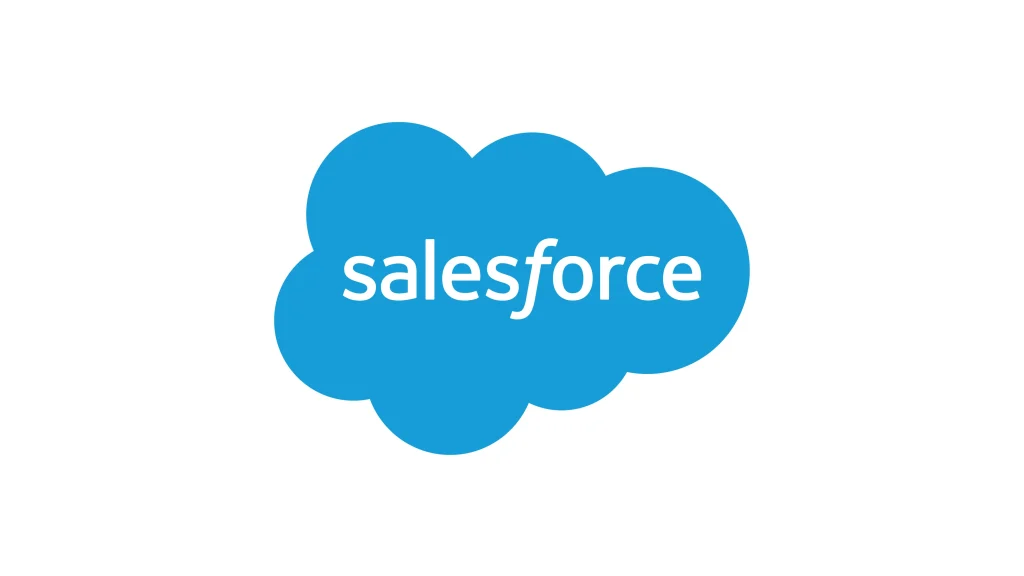
Saleforce Marketing Cloud pricing: Starts at $25/month for simple CRM suite with marketing, sales, service, and commerce. | 30-day free trial available.
Marketing Cloud leverages Einstein AI to create customer journeys that adapt in real-time based on engagement patterns, preferences, and behavioral data. The Journey Builder lets you design complex, multi-channel experiences that span email, mobile, social, advertising, and web touchpoints.
The segmentation capabilities include predictive modeling, lookalike audiences, and dynamic content personalization that ensures each customer gets relevant messaging at exactly the right moment.
The email marketing services tools are sophisticated in ways that smaller platforms simply can’t match. Advanced analytics, A/B testing, send-time optimization, deliverability management with dedicated IP addresses – it’s all designed for organizations that send millions of emails and need enterprise-level reliability.
Content Builder enables collaborative content creation with approval workflows and asset management that keeps large marketing teams organized and efficient.
What sets Marketing Cloud apart is how it integrates with the broader Salesforce ecosystem. Native connections to Sales Cloud, Service Cloud, and Commerce Cloud create a unified customer data platform that enables coordinated experiences across all touchpoints. With enterprise security features, GDPR compliance tools, and scalable infrastructure, it’s built for global organizations with complex requirements.
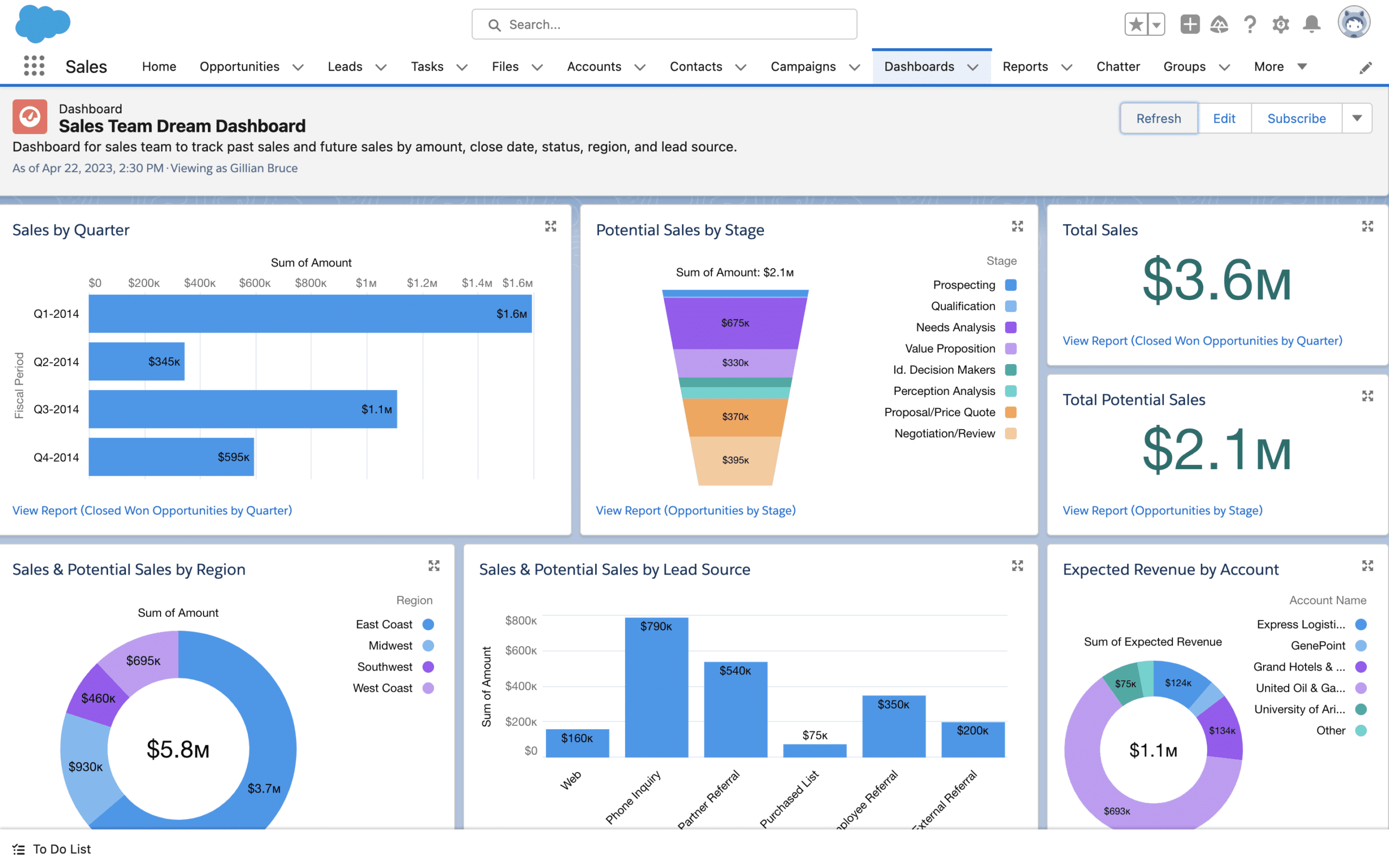
Key features
- Einstein AI integration. Intelligent customer journey orchestration with real-time adaptation based on engagement and behavioral data;
- Omnichannel journey builder. Visual workflow creation spanning email, mobile, social, advertising, and web touchpoints seamlessly;
- Enterprise-grade security. GDPR compliance, dedicated IP addresses, and scalable infrastructure with advanced data protection;
- Unified data platform. Native integration with Sales, Service, and Commerce Clouds for coordinated customer experiences.
Pros & Cons
- ✅ Highly customizable and powerful
- ✅ Enterprise-grade personalization
- ✅ Strong reporting and analytics
- ❌ Very expensive
- ❌ Complex to implement
- ❌ Not ideal for small teams
Salesforce Marketing Cloud vs Keap Pricing
Marketing Cloud operates at a completely different price level than Keap, with enterprise plans typically starting around $1,500/month compared to Keap’s $199-289/month range. But you’re also getting enterprise-grade features, unlimited contacts, advanced AI capabilities, and sophisticated automation that far exceed Keap’s functionality.
For large organizations requiring complex customer journey orchestration and omnichannel campaigns, Marketing Cloud’s pricing reflects its advanced capabilities. Small businesses should probably look elsewhere, but for enterprises that have outgrown platforms like Keap, this is where you graduate to.
Reasons to Choose Salesforce Marketing Cloud Over Keap
- Enterprise-grade scalability. Handle millions of contacts and complex customer journeys that overwhelm Keap’s limited infrastructure;
- Advanced AI capabilities. Leverage Einstein AI for predictive analytics and intelligent automation far beyond Keap’s basic features;
- Omnichannel orchestration. Create sophisticated customer experiences across all touchpoints while Keap focuses primarily on email;
- Native salesforce integration. Access unified customer data across sales, service, and marketing clouds versus Keap’s isolated functionality;
- Global compliance features. Meet enterprise security and regulatory requirements that Keap cannot support for large organizations.
“It has enabled us to go beyond casual campaigns to truly personalized marketing, driving customer engagement and more than doubling our return rates on offers at our primary sales seasons.”
Zoho CRM — Affordable CRM Features
Zoho has been quietly building one of the most comprehensive business software ecosystems out there, and their CRM is a good example of how they approach things: capable functionality at affordable pricing that makes sense for growing businesses.
User Experience Rating:
- Capterra: 4.3 / 5.0
- Trustpilot: 4.1 / 5.0
- Shopify: NA

Pricing: Starts at $15/user/month | 15-day free trial available.
The AI assistant, Zia, is surprisingly sophisticated for a platform at this price point. It provides predictive lead scoring, deal insights, and sales forecasting that help teams prioritize where to focus their energy.
The platform handles automated data capture, duplicate detection, and intelligent field suggestions that keep your customer records clean without constant manual maintenance. The workflow automation lets you create custom approval processes, automated task assignments, and trigger-based email sequences that eliminate repetitive work.
What’s impressive is the contact and account management. You get complete 360-degree customer interactions views, detailed interaction history tracking, and relationship mapping that provides context for every customer interaction. The newsletter software tools are built right into the CRM with template libraries, automation features, and campaign performance analytics, so you don’t need to jump between platforms. This creates an efficient lead management process.
The customization options are extensive – custom fields, modules, page layouts that adapt to your specific business processes and industry requirements. And the Zoho ecosystem shines: seamless integration with over 40 Zoho applications plus hundreds of third-party tools through native connectors and APIs.
With mobile apps, offline access capabilities, and a free plan for up to three users, Zoho CRM scales efficiently from small businesses to large enterprises.
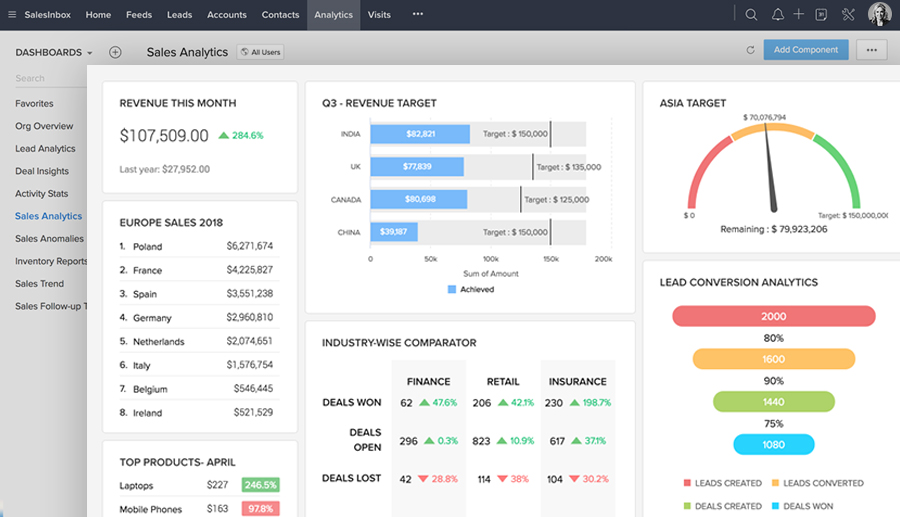
Key features
- Zia AI assistant. Predictive lead scoring, deal insights, sales forecasting, and intelligent recommendations for optimization;
- Comprehensive automation. Custom workflow creation with approval processes, task assignments, and trigger-based email sequences;
- Zoho ecosystem integration. Seamless connectivity with 40+ Zoho applications plus hundreds of third-party tools and APIs;
- Flexible pricing tiers. Free plan for three users with scalable options and advanced customization capabilities.
Pros & Cons
- ✅ Budget-friendly pricing
- ✅ Good automation tools
- ✅ Integrates well with Zoho suite
- ❌ UI can feel dated
- ❌ Add-ons can increase costs
- ❌ Limited third-party integrations
Zoho CRM vs Keap Pricing
The pricing difference here is pretty dramatic. Zoho CRM offers paid plans start at just $14/month per user. Even their highest-tier Ultimate plan at $52/month per user costs less than Keap for small teams while providing advanced automation, AI features, and extensive customization options.
Zoho eliminates the mandatory onboarding fees and contact-based pricing restrictions that make Keap so expensive. You can typically expect 80% cost savings compared to Keap, while gaining more comprehensive CRM functionality.
Reasons to Choose Zoho CRM Over Keap
- Exceptional value pricing. Access comprehensive CRM features starting free for 3 users versus Keap’s $199/month minimum requirement;
- Zia AI integration. Leverage intelligent automation, predictive analytics, and smart recommendations that exceed Keap’s basic AI features;
- Extensive ecosystem. Connect seamlessly with 40+ Zoho applications plus hundreds of third-party tools without additional integration costs;
- Advanced customization. Modify fields, workflows, and modules extensively compared to Keap’s rigid structure and limited flexibility;
- No hidden fees. Enjoy transparent pricing without mandatory onboarding charges or surprise costs that inflate Keap’s total ownership;
- Multi-channel communication. Manage email, phone, social media, and chat from one platform instead of Keap’s email-centric approach.
“Zoho Social is perfect for small teams managing multiple social media accounts. The interface is simple, and it makes collaboration easy—everyone can review, edit, and approve posts in one place. Scheduling is smart and efficient, and the pricing is ideal for teams on a budget. Great value for growing businesses!”
Freshsales — Modern CRM with Customer Support
Freshsales takes an interesting approach by combining CRM functionality with integrated customer support capabilities. It’s part of the Freshworks suite, which means you get unified customer data across sales and support functions – something that’s surprisingly rare in the CRM world. This creates better customer relationships throughout the entire lifecycle.
User Experience Rating:
- Capterra: 4.5 / 5.0
- Trustpilot: 1.5 / 5.0
- Shopify: 4.0 / 5.0
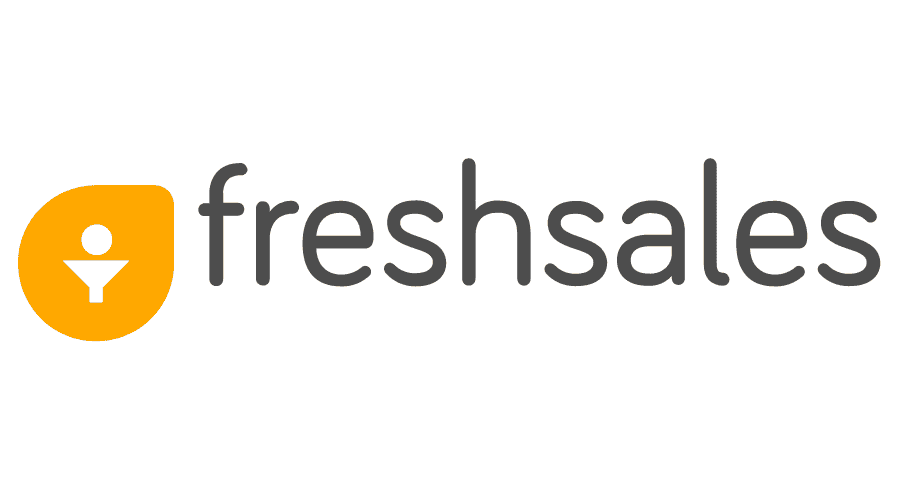
Pricing: Starts at $9/user/month | 21-day free trial available.
The AI-driven lead scoring automatically identifies high-potential prospects based on engagement patterns, demographic data, and behavioral indicators. But it goes further by providing intelligent recommendations for next actions, which helps guide your team toward the most productive activities.
The automated lead routing and territory management ensure that opportunities get to the right team members, while deal progression tracking gives you visibility into how things are moving through your pipeline.
What’s nice is the built-in communication tools. Phone, email, and chat capabilities are integrated directly into the platform, so you can communicate with prospects through multiple channels while maintaining complete interaction history and context.
This is particularly valuable for teams that need to coordinate between sales and customer satisfaction functions. The platform also includes comprehensive customer service tools and provides responsive customer support.
The sales automation and pipeline management is intuitive with drag-and-drop functionality, automated stage progression, and deal probability tracking for accurate forecasting. Workflow automation eliminates repetitive administrative work, and the reporting provides insights into sales team effectiveness and pipeline health.
But where Freshsales differentiates itself is in the seamless transition from sales to service – ticket management, knowledge base integration, and customer satisfaction tracking maintain relationship continuity throughout the entire customer lifecycle. This is particularly beneficial for customer service teams.
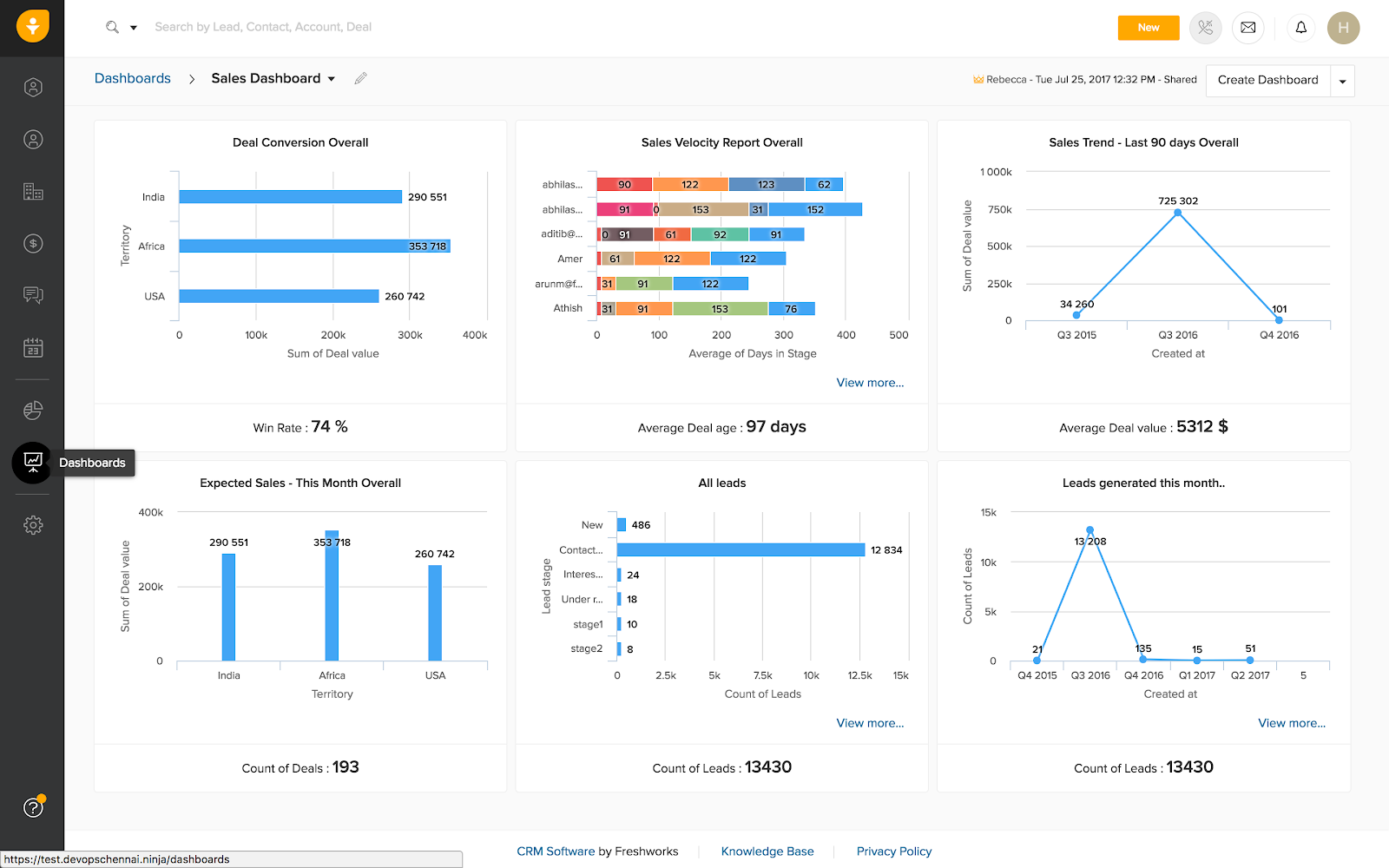
Key features
- AI-powered lead scoring. Automatic prospect identification with intelligent recommendations and behavioral analysis for prioritization;
- Omnichannel communication. Built-in phone, email, chat capabilities with complete interaction history and context maintenance;
- Sales-service integration. Unified customer data across sales and support with seamless handoff and relationship continuity;
- Advanced pipeline management. Customizable workflows with automated progression, deal probability tracking, and revenue forecasting.
Pros & Cons
- ✅ Built-in calling & email
- ✅ User-friendly interface
- ✅ Affordable entry-level plan
- ❌ Limited to Freshworks ecosystem
- ❌ Fewer advanced workflows
- ❌ May lack depth for large teams
Freshsales vs Keap Pricing
Freshsales offers much more accessible pricing with a free plan for up to 3 users and paid plans starting at $9/month per user. Their Growth plan at $39/month per user includes advanced automation, AI features, and unlimited email campaigns – providing better value than Keap’s restrictive base offering.
With no mandatory onboarding fees or artificial contact limits, Freshsales typically costs 50-70% less than Keap while offering superior integration between sales and customer support functions.
Reasons to Choose Freshsales Over Keap
- Integrated customer support. Seamlessly transition from sales to service interactions within one platform versus Keap’s sales-only focus;
- AI-powered lead scoring. Access intelligent prospect prioritization and behavioral analysis that surpasses Keap’s basic lead management;
- Modern user interface. Navigate intuitive, contemporary design compared to Keap’s outdated and confusing interface structure;
- Omnichannel communication. Manage phone, email, chat, and social interactions from one place instead of Keap’s limited communication options;
- Flexible user pricing. Scale teams affordably with per-user pricing versus Keap’s restrictive contact-based model with user limitations;
- No mandatory onboarding. Start immediately without Keap’s required $499 expert coaching fee and complex setup process.
“Very good and handy CRM for lead management and sales closures. Ideal for small, medium as well as enterprises. Very simple to use and delegate tasks to team members to take up leads and close them.”
Brevo — Multi-Channel Customer Engagement
Brevo has evolved into a comprehensive multi-channel marketing platform that goes well beyond just email. They’ve built something that handles email marketing, SMS campaigns, CRM functionality, and customer support tools all in one place.
Brevo pricing: Starts at $9/month for up to 5,000 monthly emails. | Free plan available.
The multi-channel automation is genuinely unified, which means you can create campaigns that flow seamlessly across email, SMS, WhatsApp, and push notifications.
The customer engagement journey mapping ensures consistent messaging across all touchpoints, and the segmentation capabilities are sophisticated enough to handle complex targeting based on engagement history, purchase behavior, and demographic data.
The conditional logic, time delays, and behavioral triggers let you create automation workflows that respond dynamically to what customers are doing.
The built-in CRM functionality integrates seamlessly with marketing campaigns, so you get contact management, deal tracking, and sales pipeline visualization that shares data with your marketing efforts. Lead scoring, activity tracking, and opportunity management help sales teams prioritize effectively while staying connected to marketing campaign performance.
The system handles automated follow-up sequences, meeting scheduling, and proposal generation that streamline the sales process.
What’s impressive is the attention to email deliverability. Dedicated IP options, authentication protocols, and reputation monitoring ensure your messages reach people’s inboxes – a stark contrast to the delivery issues plaguing Keap users. With VoIP calling features, chat support integration, social media integration, and customer service ticketing systems, Brevo provides genuinely unified communication management across all business functions.
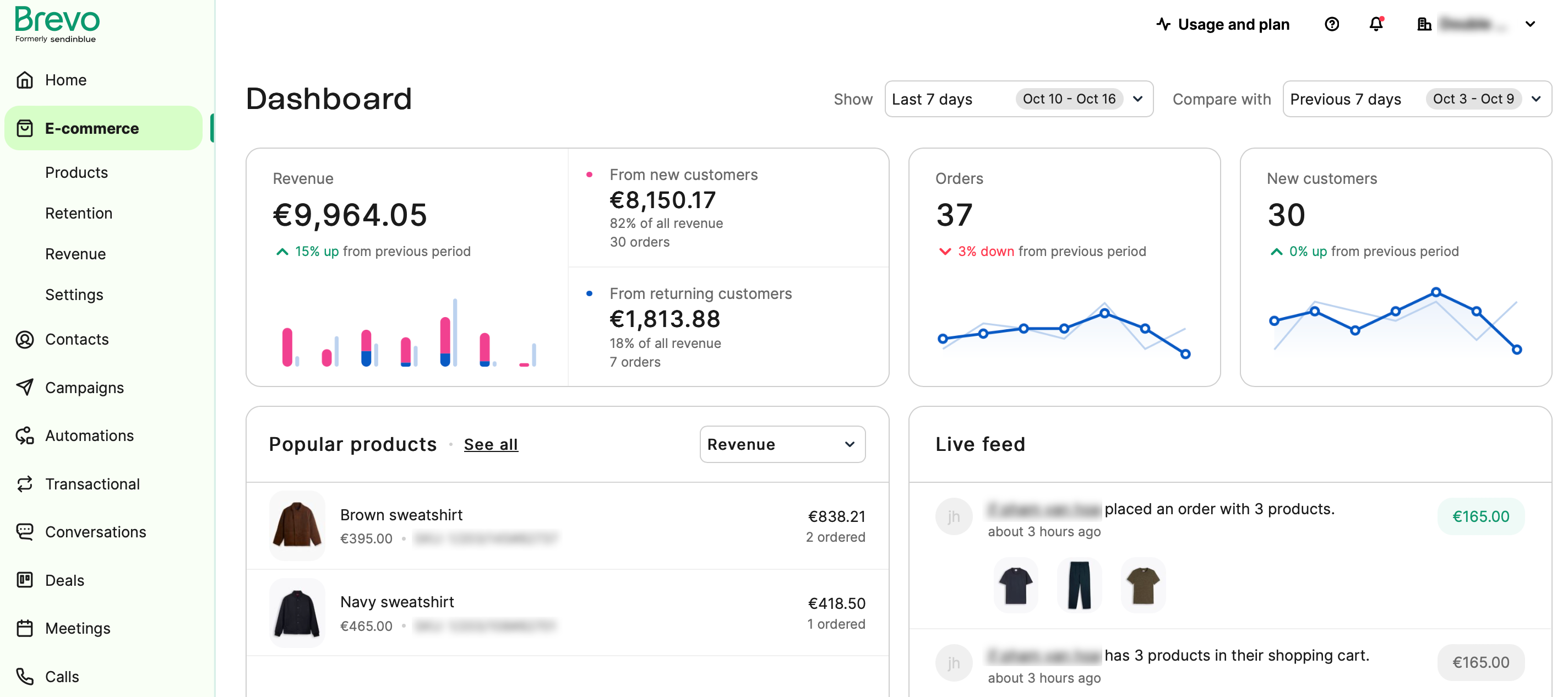
Key features
- Cross-channel automation. Unified campaigns across email, SMS, WhatsApp, and push notifications with journey mapping;
- Built-in CRM system. Contact management, deal tracking, and sales pipeline visualization integrated with marketing campaigns;
- Superior email deliverability. Dedicated IP options, authentication protocols, and reputation monitoring for consistent inbox placement;
- Comprehensive communication hub. VoIP calling, chat support, ticketing systems, and transactional email capabilities in one platform.
Pros & Cons
- ✅ Multi-channel support (Email, SMS, WhatsApp)
- ✅ GDPR-compliant
- ✅ Affordable Pro plan
- ❌ Limited automation depth
- ❌ SMS costs extra
- ❌ Reporting tools can be basic
Brevo vs Keap Pricing
Brevo’s pricing is refreshingly generous compared to Keap. Their free plan includes 300 daily emails, and paid plans start at $8/month for 5,000 emails – significantly less than Keap’s $199/month entry point. The contact-based pricing model allows unlimited users at all tiers, eliminating the restrictive user limitations and additional per-user charges that make Keap so expensive.
With no mandatory onboarding fees and comprehensive multi-channel features included at lower price points, Brevo typically offers 60-75% cost savings compared to Keap for businesses requiring email and SMS marketing capabilities.
Reasons to Choose Brevo Over Keap
- True multi-channel platform. Execute unified campaigns across email, SMS, WhatsApp, and push notifications versus Keap’s email-focused approach;
- Generous free plan. Send 300 daily emails with automation features at no cost compared to Keap’s expensive entry requirements;
- Built-in CRM integration. Access contact management and sales pipeline tools without additional fees or complex integrations required by Keap;
- Superior deliverability. Benefit from dedicated IPs and reputation monitoring that address Keap’s ongoing email delivery challenges;
- Unlimited users. Add team members at no extra cost versus Keap’s restrictive user limitations and additional charges;
- VoIP integration. Make calls directly from the platform instead of requiring separate communication tools like Keap demands.
“First off, Brevo is incredibly convenient—it’s like having all my marketing tools in one place. Whether I need to send out email campaigns, set up SMS marketing, manage my CRM, or even chat with customers live, it’s all right there, saving me the hassle of juggling multiple platforms. The interface is super easy to use, too.”
Encharge — Advanced Email Marketing Automation
Encharge is built specifically for SaaS companies and online businesses, and it shows in how thoughtfully they’ve approached behavior-driven automation. Instead of trying to be everything to everyone, they’ve focused on creating the most sophisticated marketing automation software for businesses that need to track user behavior and create personalized experiences.
User Experience Rating:
- Capterra: 4.9 /5.0
- Trustpilot: 4.9 /5.0
- Shopify: NA

Encharge pricing: Starts at $79/month for up to 2,000 subscribers. | 14-day free trial available.
The real-time flow mapping is impressive – you can build automation workflows that respond instantly to user actions, product usage, and engagement patterns. The triggering options go deep: website behavior, app usage, purchase history, custom events – most customer actions you can track.
With conditional logic, branching scenarios, and dynamic content insertion, you can create automation workflows that feel intelligent in how they adapt to individual user journeys and preferences.
The segmentation capabilities are where Encharge shines. You can target users with surgical precision based on behavioral data, custom properties, and user attributes. The cohort analysis and user lifecycle tracking help you understand customer patterns and optimize retention strategies in ways that generic email platforms simply can’t match.
Integration capabilities for major SaaS tools, ecommerce platforms, and analytics systems mean you can centralize customer data for comprehensive behavior tracking.
What’s clever is how they’ve specialized in SaaS customer journeys. Onboarding sequences, feature adoption campaigns, churn prevention automation – these are workflows that are optimized specifically for software companies. The analytics include conversion tracking, revenue attribution, and customer lifetime value measurement that provide actionable insights into campaign effectiveness.
With A/B testing capabilities, send-time optimization, and deliverability monitoring, you can trust that your carefully crafted communications will reach their intended audience and drive results.
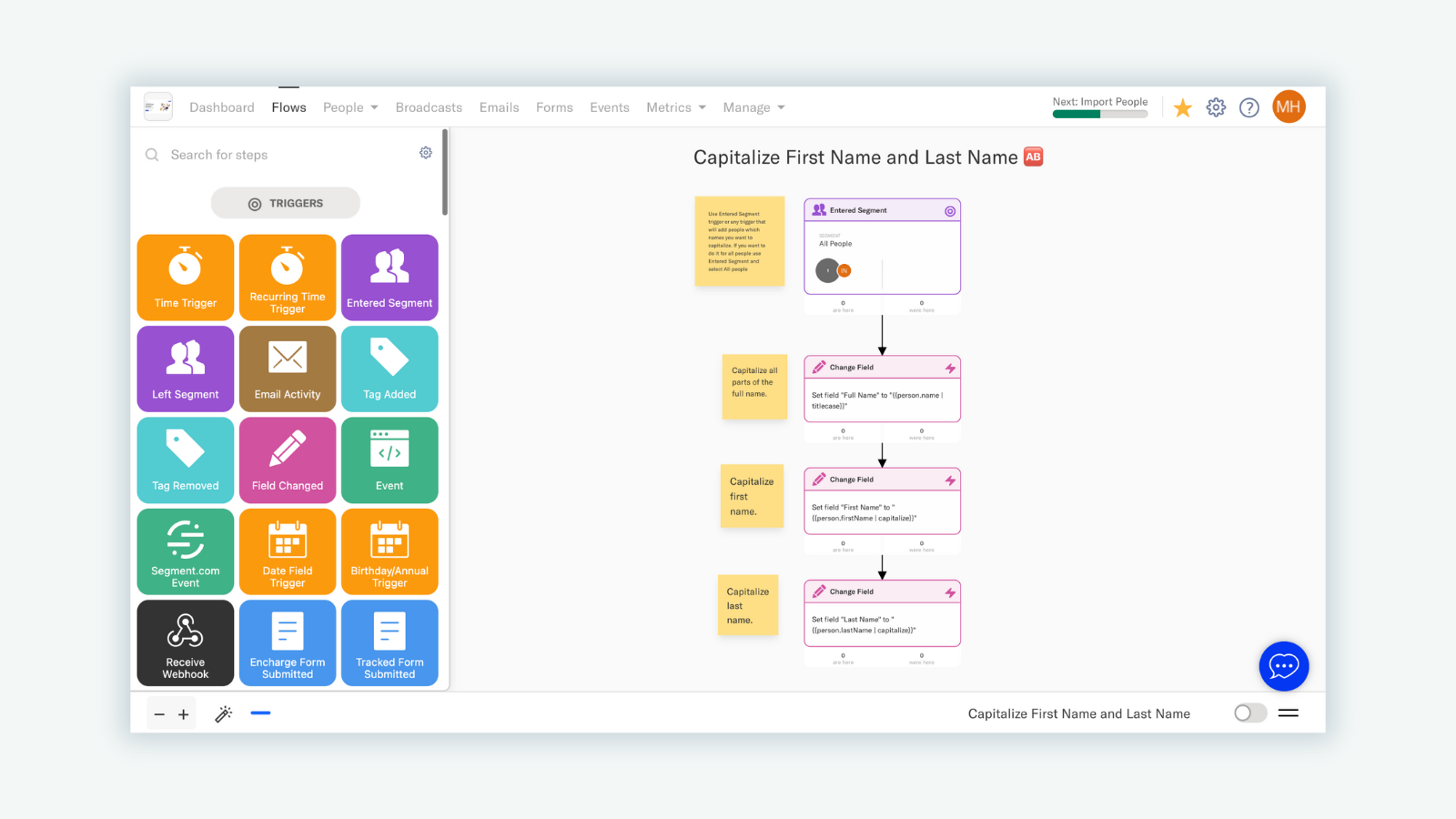
Key features
- Behavior-driven automation. Real-time flow mapping responding to user actions, product usage, and custom event triggers;
- Advanced user segmentation. Precise targeting based on behavioral data, custom properties, and cohort analysis capabilities;
- SaaS-optimized journeys. Specialized onboarding sequences, feature adoption campaigns, and churn prevention automation workflows;
- Revenue attribution analytics. Conversion tracking, customer lifetime value measurement, and A/B testing with deliverability monitoring.
Pros & Cons
- ✅ Powerful automation flows
- ✅ Great for SaaS onboarding
- ✅ Visual flow builder
- ❌ Steep learning curve
- ❌ No free plan
- ❌ Limited integrations compared to others
Encharge vs Keap Pricing
Encharge offers transparent pricing starting at $79/month for 2,000 contacts with advanced automation features – compare that to Keap’s $199/month for just 1,500 contacts. Encharge includes unlimited emails, users, and sophisticated behavioral tracking at all pricing tiers, while Keap restricts these features and charges additional fees for users.
With no mandatory onboarding costs or hidden charges, Encharge provides better value for SaaS companies and online businesses requiring advanced email automation. You’re typically looking at 40-50% cost savings compared to Keap for comparable functionality.
Reasons to Choose Encharge Over Keap
- Behavior-driven automation. Create sophisticated workflows based on real user actions and product usage versus Keap’s basic trigger options;
- SaaS-optimized features. Access specialized onboarding, feature adoption, and churn prevention tools designed for software companies unlike Keap’s generic approach;
- Advanced segmentation. Target users with precision based on behavioral data and custom properties that exceed Keap’s limited segmentation capabilities;
- Real-time flow mapping. Visualize and modify customer journeys instantly compared to Keap’s slow and cumbersome workflow editor;
- Revenue attribution. Track customer lifetime value and conversion paths with sophisticated analytics that Keap’s basic reporting cannot match;
- No contact restrictions. Focus on engagement quality over quantity without Keap’s artificial contact limits and pricing penalties.
“It’s user-friendly, reliable, and powerful enough to handle advanced automations without the learning curve you get with other platforms. I use it to follow up with customers, onboard new subscribers, and promote products and classes and it’s helped increase my engagement significantly.”
How We Chose the Top Keap Alternatives
We didn’t just pick these platforms out of a hat. We spent months testing dozens of CRM and marketing automation platforms, and we applied rigorous criteria to figure out which ones deserve to be called viable Keap alternatives.
Features & capabilities were our starting point. We dug deep into core functionality – automation workflows, CRM capabilities, email marketing tools, integration options, and advanced features such as AI-driven insights. But we weren’t just checking boxes; we were looking for platforms that offer comprehensive toolsets that genuinely exceed what Keap provides while eliminating the common limitations that frustrate Keap users, such as restricted integrations and basic reporting.
Ease of use played a bigger role than you might expect. We tested interface design, onboarding processes, and workflow creation on each platform. The question wasn’t just “can you do it?” but “how quickly can you do it, and how much help do you need?” Platforms with intuitive navigation and drag-and-drop builders consistently ranked higher than those requiring extensive technical knowledge or lengthy training periods.
Deliverability & performance were crucial given Keap’s well-documented email delivery problems. We analyzed actual deliverability rates, sender reputation management, and infrastructure reliability. Platforms with proven high inbox placement rates and robust authentication protocols that ensure consistent message delivery got priority in our recommendations.
Pricing & value comparisons revealed dramatic differences. We focused on the real costs – including hidden fees, mandatory charges, and scaling expenses. Our recommendations provide superior value with transparent pricing structures that eliminate the kind of surprise costs that make Keap so expensive.
User reviews from verified customers gave us insights that you just can’t get from marketing materials. We analyzed hundreds of reviews across G2, Capterra, and Trustpilot to understand what users experience day-to-day. Platforms with consistently positive feedback and high retention rates got higher scores in our evaluation.
Customer support quality was particularly important given the widespread complaints about Keap’s customer service. We evaluated availability, responsiveness, and actual expertise levels. The platforms we recommend offer superior support experiences with multiple contact methods and comprehensive self-service resources that actually help users succeed.
Keap Alternatives FAQs
What is the best Keap alternative available?
Based on our testing and analysis, Sender emerges as the top overall alternative to Keap. The value proposition is compelling – 15,000 monthly emails to 2,500 subscribers completely free, with advanced automation, cross-channel marketing, and professional templates. Compare that to Keap’s $199/month minimum plus mandatory onboarding fees, and the choice becomes clear.
That said, if you need more enterprise-level features, HubSpot CRM and ActiveCampaign alternatives also excel with superior functionality and more reasonable pricing compared to Keap’s restrictive offerings. The “best” choice depends on your specific needs and budget.
Is Keap worth the cost?
That’s a tough one to answer positively. At $199/month plus that mandatory $499 onboarding fee, Keap costs significantly more than alternatives while struggling with deliverability issues, poor customer support, and limited integrations.
Platforms like Sender offer comparable (often superior) features starting completely free, with long-term savings of around 75%. Unless you’re heavily invested in Keap’s specific workflow and can’t migrate, it’s hard to justify the cost when better options exist.
Which Keap alternative is best for small businesses?
Small businesses should consider Sender or other Brevo alternatives first. Getting enterprise-grade email marketing automation completely free plan access for up to 2,500 subscribers is amazing for companies just starting out. The interface is intuitive, the automation workflows are comprehensive, and scaling up is affordable without the complexity that makes Keap so overwhelming.
HubSpot CRM is another excellent choice with its robust free tier, while Zoho CRM provides comprehensive features starting at just $14/month per user. All of these eliminate the barriers to entry that make Keap so expensive for growing businesses, especially ecommerce businesses looking to optimize their marketing efforts and sales processes through improved project management and bulk email services.
Also read:
